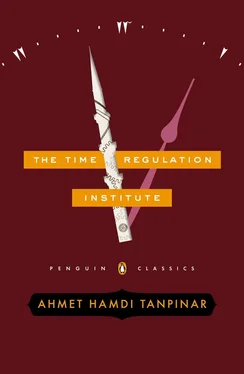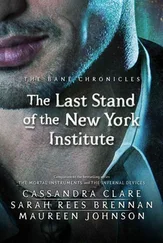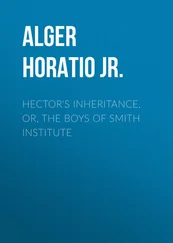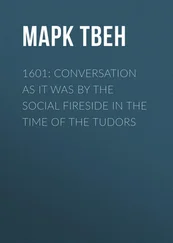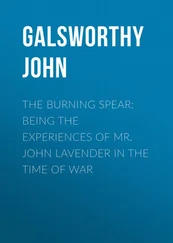VII
From the moment of its publication, The Life and Works of Ahmet the Timely was met with great acclaim. The public immediately warmed to this important historic figure — a figure created by Halit Ayarcı in the space of a moment. No one seemed to question the likelihood that such a figure could have anticipated Graham’s calculations two centuries before the fact. At the insistence of Halit Ayarci, I had described in great detail the fascination our forbears had for mathematics at that time, so much so that they must have assumed Ahmet the Timely’s discovery was derived from a mathematical equation. Yet as the book neared publication, I felt absolute terror. “What if no one likes it?” I wondered. “What if they discover it’s all a lie?” Fear made my every moment agony. I couldn’t sleep. Halit Ayarcı simply laughed to see me so anxious. He took every opportunity to assure me that my fears were ungrounded:
“My good friend Hayri Irdal,” he said. “My dear friend, you’ll see that your book will be adored. You seem to be under the impression that it contains untruths. But that’s not so. There is nothing you have done that is not true. Today’s Ahmet the Timely is not a falsification: he is the very embodiment of truth. Do you know what would make him a falsification and a disaster? If he had actually lived at the end of the seventeenth century, if he’d entertained the ideas we’ve attributed to him, well, then that would be a lie. He would be in the wrong age. He would have had to travel through time, which is, of course, impossible. In matters such as these, there is no set truth. It is a question of working with the century at hand and making him a man of his time. Our age needs Ahmet the Timely Efendi. And it is only at the end of the seventeenth century that this need can be filled. That’s all there is to it. He is truth incarnate. We all heard what your aunt said last night. You may recall her tracing the lineage of Ahmet Efendi the Some Timer back to the age of Fatih Sultan. Did anyone challenge her? No. Everyone was quite pleased to accept it as the truth. And why not? Her assertion is proven by two living entities: you and your aunt! In acknowledging that you exist, they accept her line of reasoning. What could be more natural than these two dear individuals tracing their lineage that far back? Had your aunt said such a thing twenty years ago, everyone would have been ashamed of her, and that’s because in those days you two were not the same people. People would have cried, ‘Oh God, please! Could there be anything more ridiculous than people of so little consequence tracing their ancestry back to the age of Fatih Sultan?’ It’s just as the saying goes: the blasphemous man builds his casket out of firewood. A pack of lies. Would their manners not be more noble and graceful if it were really true? Today, on the other hand, they say nothing of the sort. Here’s another example: When your aunt became aware of your success, she changed her mind about you and also your father. And what did she say about your father that night? Was she lying? No. She was simply giving her present opinion a place in the past! Very good of you to discover that Ahmet the Timely participated in the Ottoman siege on Vienna. A man of his importance would not have been far removed from that momentous occasion. I can’t begin to tell how you much I enjoyed this discovery of yours. It calls to mind Goethe’s military involvement in the French Revolution and at the battle of Valmy. Great men ride the currents of the age. That said, it is good that Ahmet the Timely never saw glory on the battlefield — that shows you to be balanced in your judgment. No one can do everything! Be there at the event but have others perform the heroics! Indeed if such a great deed had ever happened — let’s say Ahmet the Timely conquered such and such a castle — it wouldn’t have escaped the eyes of a historian. It really was a stroke of luck that you happened to read his On the Mores of Conjugal Ceremonies and Bonds when you were young. For if you hadn’t, this important work would have been lost, and it would not be here for us to enjoy today. Just imagine the public grief had that work — or his treatise on horology — disappeared. Quite good that you jotted down these two titles from one of the old manuscripts in the Nuruosmaniye Library. Ah, and here we see how important it is that you appreciated the importance of old ink. My dear friend, you have written a magnum opus!”
On another occasion he said the following:
“As important as creating a movement is maintaining its momentum. In extending our movement to the past, you have intensified its forward momentum. In addition you have shown that our forbears were both revolutionary and modern. No one can begrudge his past forever. Is history material only for critical thought? Can we not stumble upon someone from the past whom we love and enjoy? Oh, you’ll see how pleased everyone will be with our work!”
Unfortunately a handful of armchair academics tried to spoil the fun, being so impertinent as to suggest that such a figure had never actually existed and dismissing the book as a complete fabrication.
Had I finished the book in my original frame of mind, I might have taken pleasure in their criticism. “Oh, thank God!” I would have cried. “How could I ever thank you more? If anything, now I know that there are sensible people out there! They won’t tolerate these lies. What could be more felicitous than this?” But sadly I was no longer the same man. Over the six months I’d spent working on the book, I’d come to see the world through Halit Ayarcı’s eyes, so much so that I found any objection to my work intolerable. It was now, after all, a question of an author’s pride. And I had grown very fond of Ahmet the Timely. To doubt his existence at this late date would be far too troubling. I had, in effect, come to see Halit Ayarcı’s notion of relativity as my own.
By way of illustration, allow me to describe two unrelated matters that caused me considerable trouble at around this time. First there was the individual whose family had lived in Çengelköy for five or six generations who claimed to be Ahmet the Timely’s direct descendent. He filed for his family name to be changed and went so far as to ask me to attest to the veracity of his connection in a court of law. Unfortunately he was unable to support his claim with the original deeds, or indeed with any genealogy reports. All he had were copies he’d written out himself. In the name of truth, I was obliged to deny the veracity of the documentation. My decision was vigorously applauded in the newspapers. They marveled at my scrupulous attention to the niceties of the case. And after this the book grew even more popular. Halit Bey was amused by my fine show of resilience. Only Zehra was a touch upset: “Perhaps the poor man really was the Timely Efendi’s great-great-grandson,” she whimpered. I silenced her, saying:
“He might very well be a Timely, but he can’t be related to our Timely, as such a man never really existed!”
The second test came from the Spiritual Society, where one of my friends succeeded, after struggling day and night for a month, in summoning and communicating with the spirit of Ahmet the Timely. Ahmet the Timely took this opportunity to challenge certain points in my book: He denied ever stammering or speaking with a lisp, and he offered up new information on his dervish lodge as well as the extent of his influence. The papers picked up the story, after which the book became more popular still. The strangest thing about it was that — before taking his leave — he asked the summoning spiritualists to extend his gratitude to me. This may well have been the first time an official message of thanks from the world beyond had ever been reported in the media, and it was given the full appreciation it deserved.
Читать дальше
